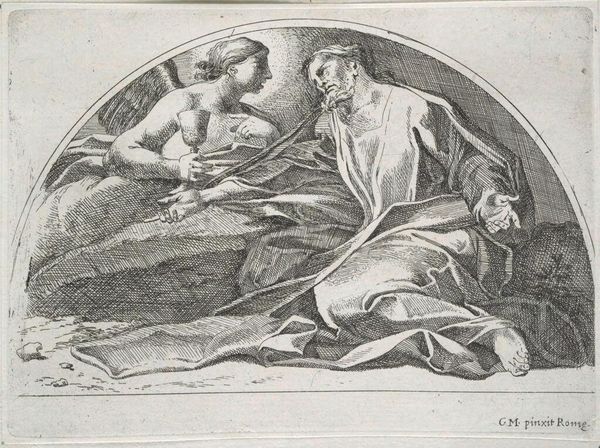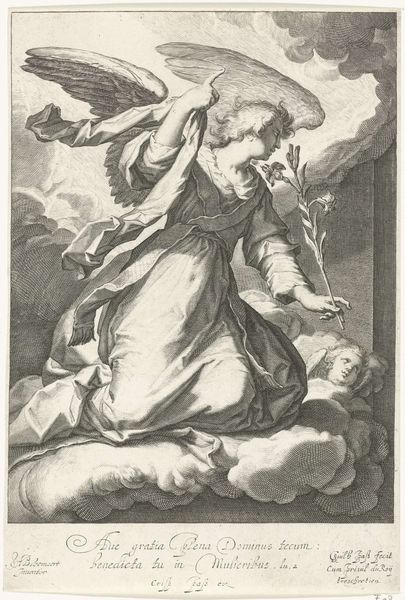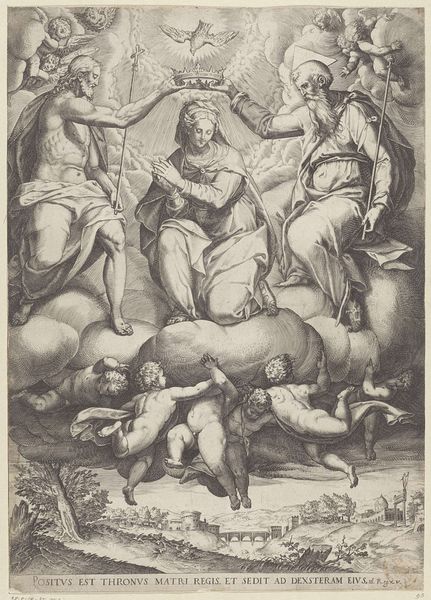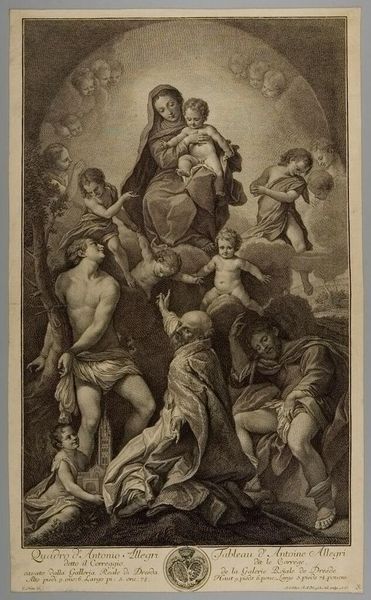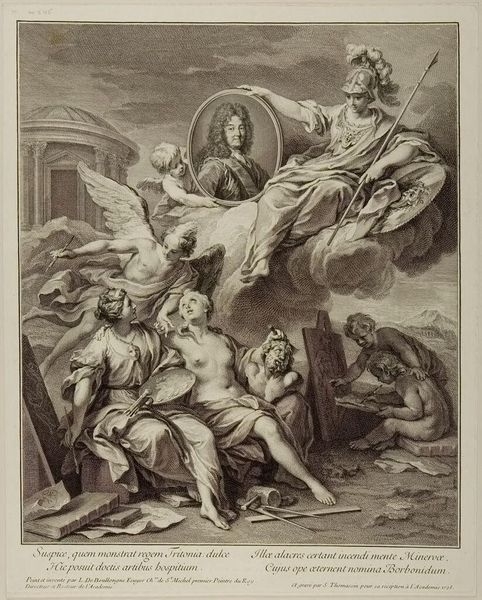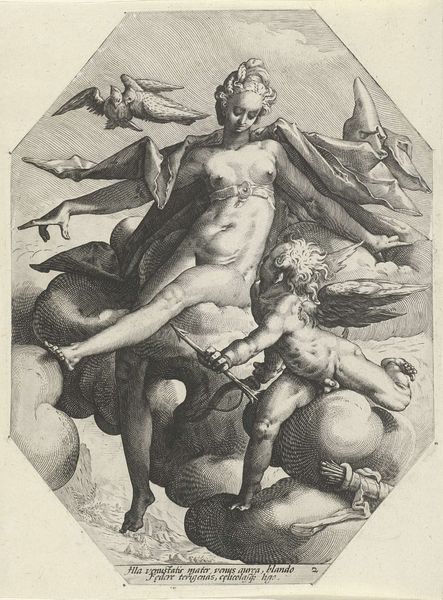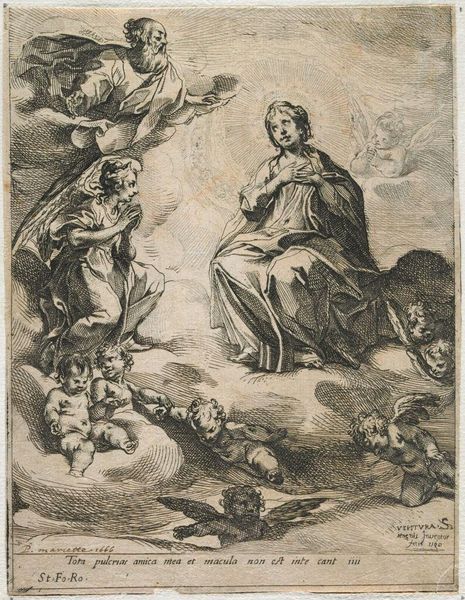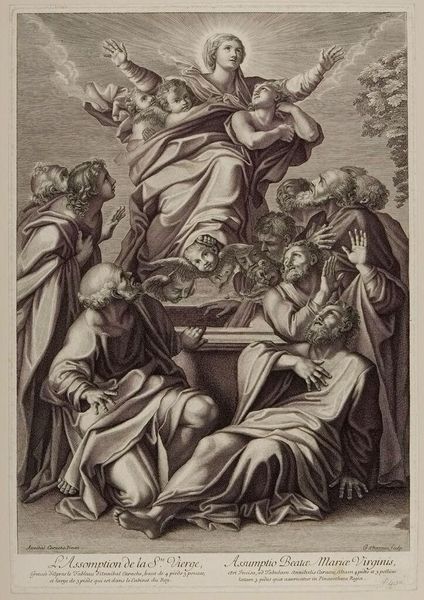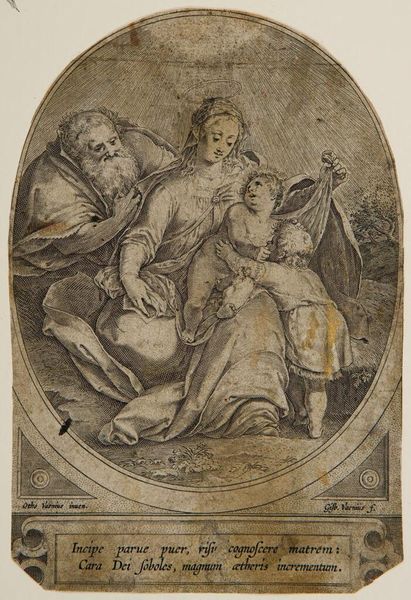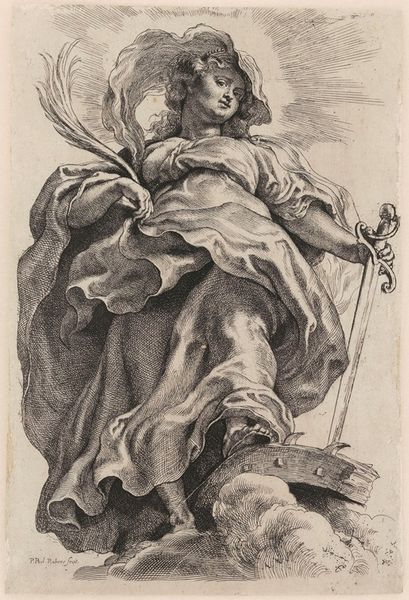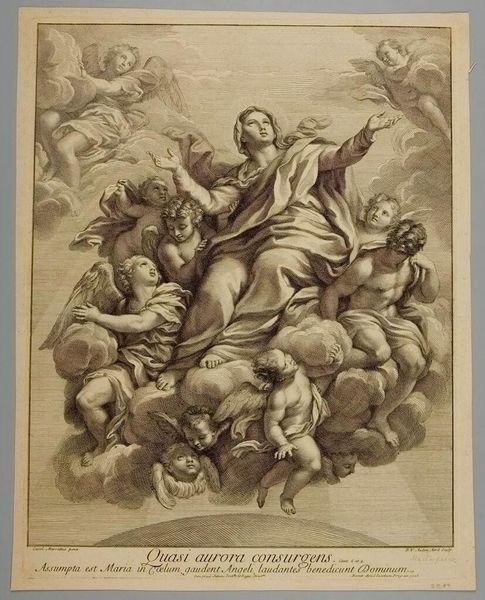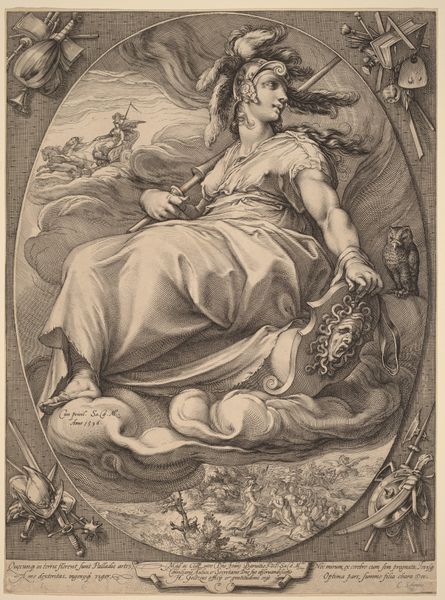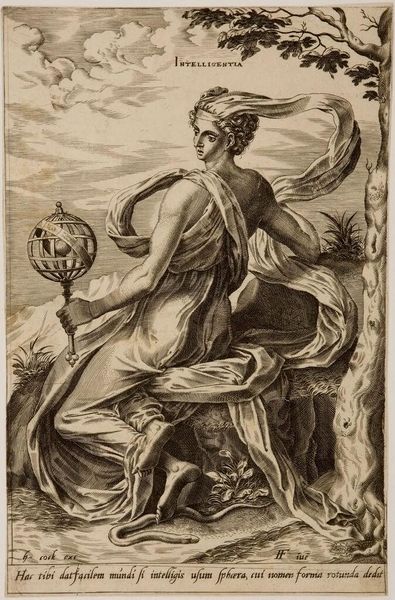
painting, oil-paint
#
portrait
#
baroque
#
painting
#
oil-paint
#
figuration
#
oil painting
#
flemish
#
history-painting
#
portrait art
Copyright: Public Domain: Artvee
Peter Paul Rubens painted “St. Albert of Louvain” in the 17th century, a period marked by religious and political upheaval. The painting depicts Albert, who was murdered for defending the Church's independence. Rubens captures Albert ascending, draped in cardinal red, clutching a palm of martyrdom, his upward gaze suggesting divine communion. Flanking him are cherubic figures, adding a baroque exuberance to the scene. But it's not merely a depiction of sainthood; it is a potent statement on power, resistance, and the price of conviction, especially in the context of the Counter-Reformation. Rubens, deeply embedded in the Catholic aristocracy, uses his artistic prowess to reinforce the Church's narrative. Yet, the painting is also undeniably human. There is an emotional depth in Albert’s expression, a sense of resolute peace that transcends the political messaging. The brushwork, the colors, the composition—they all speak to a profound investment in the subject. It serves as both a historical artifact and a testament to the enduring power of faith amidst adversity.
Comments
No comments
Be the first to comment and join the conversation on the ultimate creative platform.
